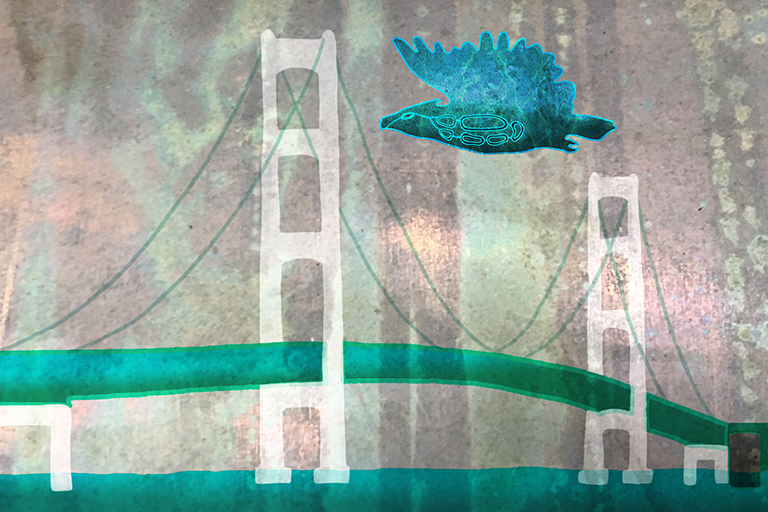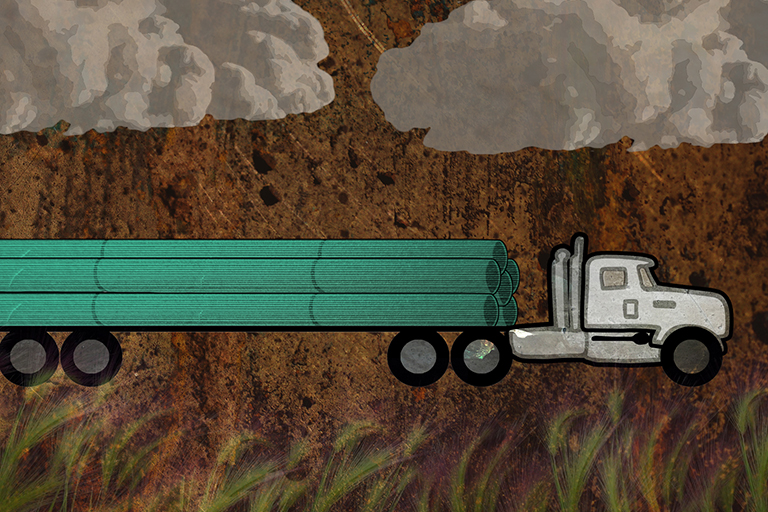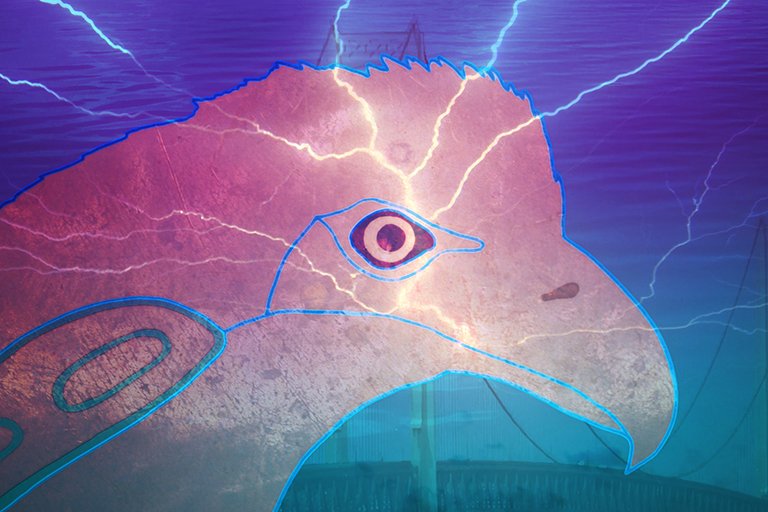It takes more than impressive coding skills to create an award-winning game. Assistant Professor Elizabeth LaPensée brought her most recent game, Thunderbird Strike, to life through her meticulous artwork and passion for Native American culture.
Thunderbird Strike is a 2D, side-scrolling game that sets players on a quest from the Alberta Tar Sands to the Great Lakes in order to protect Turtle Island and conquer the invading oil industry. As a thunderbird, players are challenged to fly through storms to build up their lightning power, becoming capable of reviving animals, activating people and zapping oil operations.
“Thunderbird Strike is a game of balance,” said LaPensée. “You receive a Destruction score versus a Restoration score, but the game doesn’t presume to tell you which path you should focus on. That’s up to you.”
Finding Inspiration
The thunderbird, which is a figure in several Indigenous cultures, can use lightning to restore wolves, caribou, buffalo and people or destroy vehicles, buildings and pipelines.
“I designed Thunderbird Strike to be a high score game because I want my community and those who are interested to have an experience where we always win against the oil industry,” said LaPensée. “My hope is that it will encourage people to become aware of pipelines, [Enbridge’s] Line 5 in particular, and take steps to put an end to our reliance on oil. For example, anyone can help by taking their money out of banks that support oil.”

Not only does the game bring awareness to current environmental issues, but it also provides insight into Native American culture. The game was a way for LaPensée to represent her own culture with pride.
“I was inspired to develop a game to address oil operations since I am both Anishinaabe and Métis and my children are also Beaver Lake Cree, a nation which is near the Tar Sands,” said LaPensée.
Meticulously Crafted
Years of work have gone into every detail of the game. The Media and Information professor started working on Thunderbird Strike back in 2015.
“Every moment of effort was worth honoring the lands and waters of Turtle Island,” said LaPensée. “I hand drew the linework for each sprite and animation as well as created the cut scenes using stop motion animation. It was quite a bit of work, but absolutely worth it.”
While most games have repeating backgrounds that are cycled through over and over, the first two levels in Thunderbird Strike have around 39 unique background images. Even the textures of the thunderbird character change from level to level.

“While it is incredible being at this point with the game, I’m definitely not using this process again while I move forward with more robust games that have more levels and mechanics,” said LaPensée.
Though the game was created with LaPensée’s design, art and writing, she had help finalizing the version that’s played today. Adrian Cheater and Jane Scott programmed the game and NÀHGĄ a.k.a. Casey Koyczan produced music and sound effects. NÀHGĄ is a multi-instrument live-looper who utilizes a variation of effects with his instruments and voice to create dynamic compositions. His music represents a Northern Canada aesthetic inspired by culture, technology, politics and traditional stories.
Thunderbird Strike is currently available on Windows PC and will be released on mobile devices in December 2017.
By Kaitlin Dudlets
